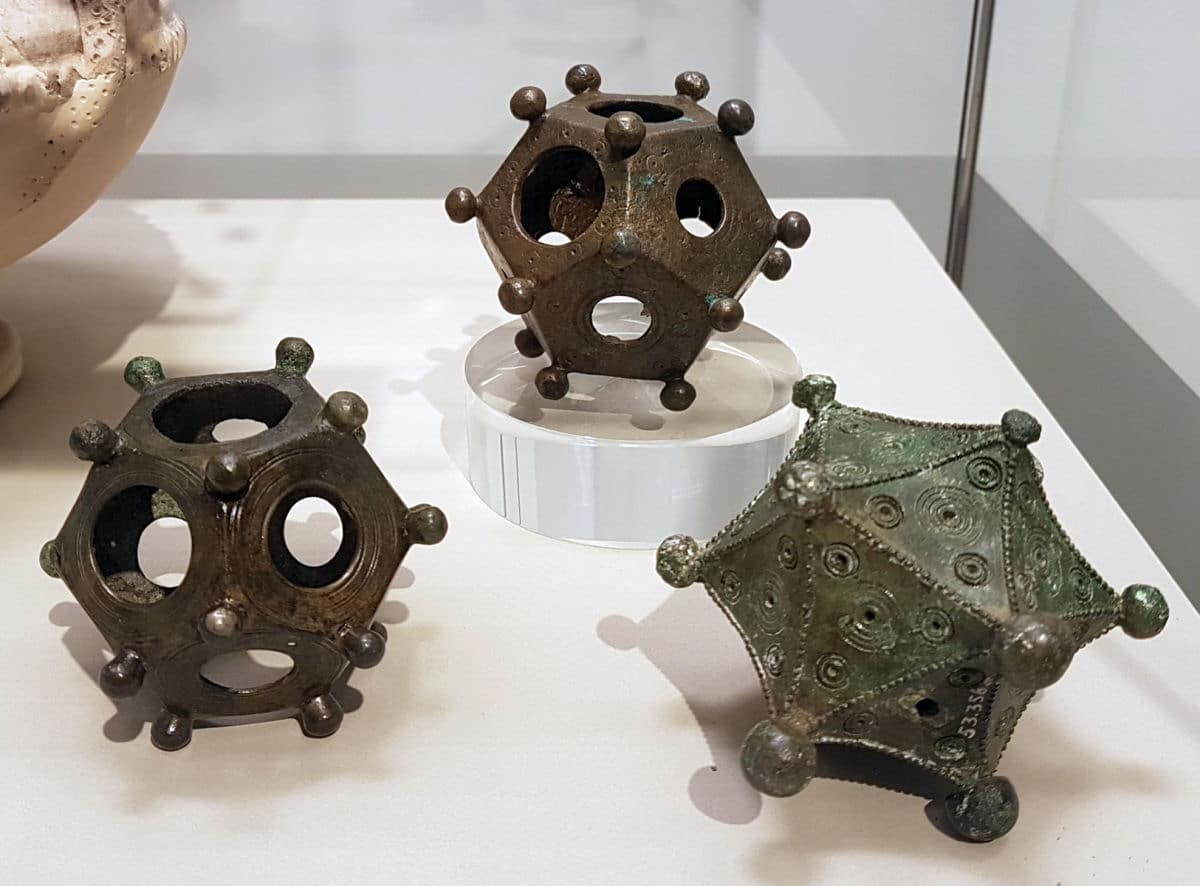It is safe to say that there are secrets of ancient Roman civilization that even a century of close study will not reveal to us. Meanwhile, historians and archaeologists often discover artifacts that are confusing. One such object is the Roman dodecahedron.
This is a hollow bronze decahedral puzzle with twelve flat pentagonal faces – a riddle. Nothing is known about its purpose. But there are some hypotheses that have been put forward since its first discovery over 300 years ago.
The strange discovery made all antique dealers tense, but there was no need to worry – there were more on the way.
Most dodecahedrons are between four and eleven centimeters in size and weigh between 35 and 580 grams. Each pentagonal surface contains a hole, but the sizes of these holes almost always vary. Each of the five vertices has a ball-shaped button.
Some appeared in theaters and tombs, others among piles of discarded coins. Many historians have also found these items from antiquarians, making it difficult to trace their provenance.
Each object discovered later differed in size and design.
In 2016, 116 dodecahedrons were discovered on the territory of modern Belgium, Croatia, France, Germany, Great Britain, Hungary, Luxembourg, the Netherlands and Switzerland. A single piece of silver was found in Geneva.
Interestingly, as far as we know, dodecahedrons do not exist in the Eastern Roman Empire.
Those found in the western region date back to the 2nd, 3rd, and 4th centuries AD. The randomness of their location, as well as the lack of a written context, has further puzzled historians.
They are full. They are scattered all over Europe and they are still a mystery. What could these little things mean? What were they made for?














 English
English French
French Spanish
Spanish German
German Dutch
Dutch Italian
Italian Danish
Danish Portuguese
Portuguese Greek
Greek Russian
Russian Swedish
Swedish Bulgarian
Bulgarian Hungarian
Hungarian Catalan
Catalan Ukrainian
Ukrainian Polish
Polish Basque
Basque Chinese (Simplified)
Chinese (Simplified) Japanese
Japanese Hebrew
Hebrew Arabic
Arabic Swahili
Swahili Amharic
Amharic Irish
Irish Afrikaans
Afrikaans Albanian
Albanian Armenian
Armenian Azerbaijani
Azerbaijani Belarusian
Belarusian Bengali
Bengali Bosnian
Bosnian Cebuano
Cebuano Chichewa
Chichewa Chinese (Traditional)
Chinese (Traditional) Corsican
Corsican Croatian
Croatian Czech
Czech Esperanto
Esperanto Estonian
Estonian Filipino
Filipino Finnish
Finnish Frisian
Frisian Galician
Galician Georgian
Georgian Gujarati
Gujarati Haitian Creole
Haitian Creole Hausa
Hausa Hawaiian
Hawaiian Hindi
Hindi Hmong
Hmong Icelandic
Icelandic Igbo
Igbo Indonesian
Indonesian Javanese
Javanese Kannada
Kannada Kazakh
Kazakh Khmer
Khmer Korean
Korean Kurdish (Kurmanji)
Kurdish (Kurmanji) Kyrgyz
Kyrgyz Lao
Lao Latin
Latin Latvian
Latvian Lithuanian
Lithuanian Luxembourgish
Luxembourgish Macedonian
Macedonian Malagasy
Malagasy Malay
Malay Malayalam
Malayalam Maltese
Maltese Maori
Maori Marathi
Marathi Mongolian
Mongolian Myanmar (Burmese)
Myanmar (Burmese) Nepali
Nepali Norwegian
Norwegian Pashto
Pashto Persian
Persian Punjabi
Punjabi Romanian
Romanian Samoan
Samoan Scottish Gaelic
Scottish Gaelic Serbian
Serbian Sesotho
Sesotho Shona
Shona Sindhi
Sindhi Sinhala
Sinhala Slovak
Slovak Slovenian
Slovenian Somali
Somali Sundanese
Sundanese Tajik
Tajik Tamil
Tamil Telugu
Telugu Thai
Thai Turkish
Turkish Urdu
Urdu Uzbek
Uzbek Vietnamese
Vietnamese Welsh
Welsh Xhosa
Xhosa Yiddish
Yiddish Yoruba
Yoruba Zulu
Zulu